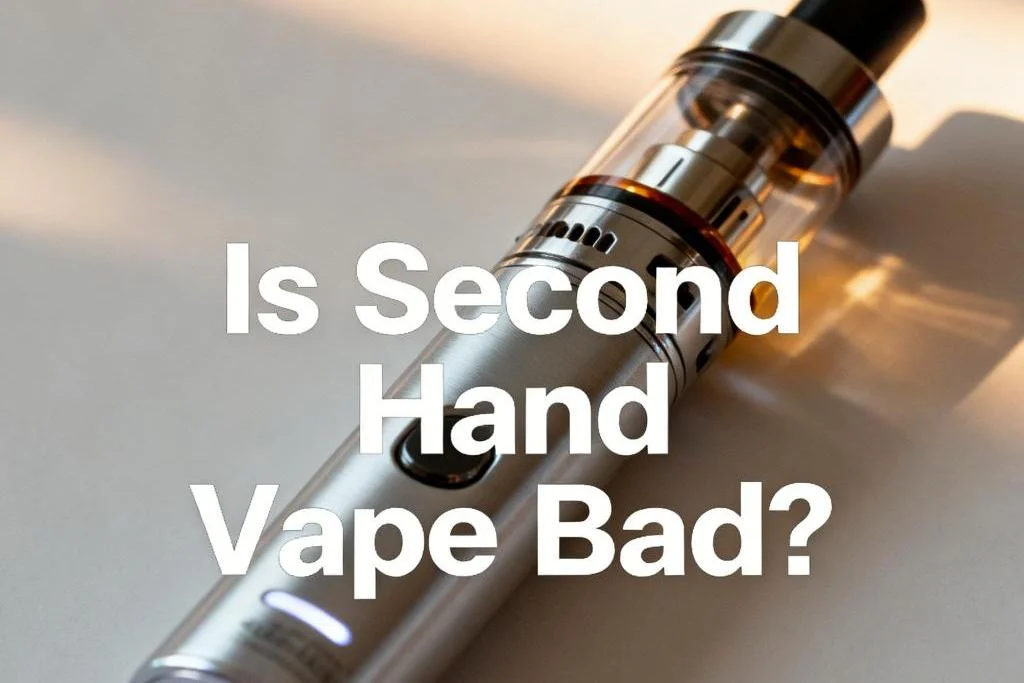Is Second Hand Vape Bad?
This guide will provide insights into the potential risks, scientific findings, and safety measures surrounding second-hand vape.
Read More >>WARNING: THIS PRODUCT CONTAINS NICOTINE. NICOTINE IS AN ADDICTIVE CHEMICAL.
Vaping has become an increasingly popular alternative to smoking, but questions regarding its safety, especially concerning second hand vape exposure, remain common. As vaping continues to grow in popularity, it's crucial to understand whether second hand vape is harmful to non-smokers or bystanders. This guide will provide insights into the potential risks, scientific findings, and safety measures surrounding second-hand vape.
Second hand vape refers to the aerosol or vapor exhaled by a person who is using an e-cigarette or vaping device. Unlike second hand smoke from traditional cigarettes, which consists of harmful chemicals from burning tobacco, second hand vape is made up of the vapor from e-liquids that may contain nicotine, flavorings, and other chemicals.

The risks associated with second hand vape exposure are not yet fully understood, as vaping is still relatively new compared to smoking. However, research indicates that second hand vape may pose certain health risks to non-smokers, particularly in enclosed spaces. Some studies suggest that:
Currently, most research focuses on comparing the risks of second hand vape to those of second hand smoke from traditional cigarettes. According to studies from institutions like the CDC and WHO, while vaping is less harmful than smoking, exposure to second hand vape is still a concern.
The risks of second hand vape are less severe than the risks of second hand smoke, which contains thousands of harmful chemicals. However, the long-term effects of exposure to second-hand vape are still unknown, and more research is needed to fully understand the potential risks.

If you're concerned about second hand vape, there are some precautionary steps you can take:
While second hand vape may not be as harmful as second hand smoke, it's not entirely without risks. The key takeaway is that, like any form of inhalation, exposure to e-cigarette vapor should be minimized, particularly for vulnerable groups. As research continues to evolve, it's important to stay informed about the potential risks and practice responsible vaping to safeguard the health of both users and non-users.
1. Is second hand vape harmful to your health?
While second hand vape is generally less harmful than second hand smoke from traditional cigarettes, it can still pose risks. Exposure to the chemicals in vape vapor, such as nicotine and formaldehyde, may cause respiratory irritation, throat discomfort, and, in some cases, longer-term health effects. The long-term impacts of second hand vape exposure are still being studied, but it's best to avoid exposure, particularly for children, pregnant women, and those with respiratory conditions.
2. Can second hand vape cause cancer?
Currently, there is no definitive evidence linking second hand vape exposure directly to cancer. However, e-cigarette vapor contains trace amounts of chemicals, some of which are known carcinogens when consumed in large quantities. Since vaping is still relatively new, more research is needed to determine the potential cancer risks of second hand exposure over extended periods.
3. How much nicotine is in second hand vape?
The amount of nicotine in second hand vape is relatively small compared to that found in traditional cigarette smoke. However, even small amounts of nicotine exposure can be harmful, especially for children, pregnant women, and people with cardiovascular issues. The risk depends on factors like the size of the vaping device, the nicotine concentration in the e-liquid, and the duration of exposure.
4. Is it safe to be around someone who is vaping?
While the risks of being around someone who is vaping are lower than the risks of second hand smoke, it is still not entirely risk-free. Second hand vape may irritate the eyes, throat, and lungs, particularly for individuals with asthma or other respiratory conditions. If you're concerned, it's a good idea to avoid close proximity to a person who is vaping, especially in enclosed spaces.
5. What is the difference between second hand vape and second hand smoke?
Second hand smoke from traditional cigarettes contains thousands of harmful chemicals, many of which are carcinogenic. In contrast, second hand vape contains fewer toxic substances, as e-cigarettes do not burn tobacco. However, vaping is not without risks. It still releases nicotine and other chemicals that can cause respiratory issues and irritate the airways, though generally at lower levels than in second hand smoke.